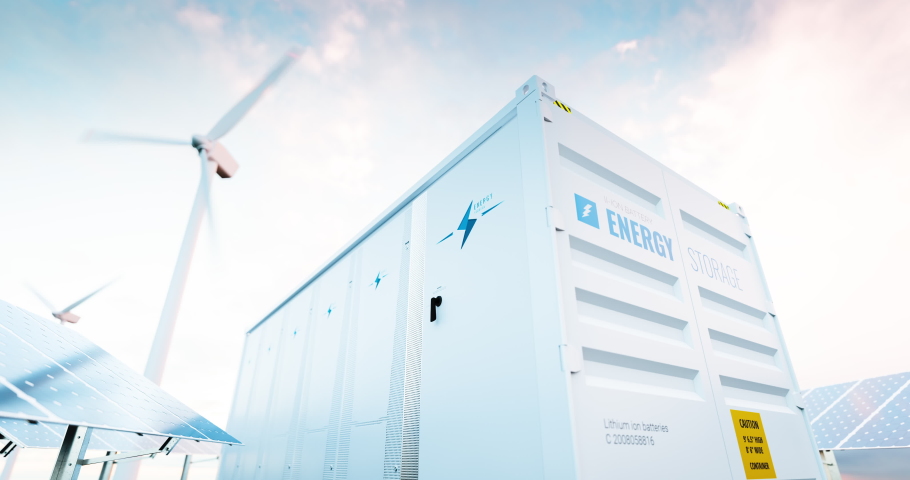The domestic commercial and industrial energy storage market is currently experiencing a thriving golden age with continuous expansion in market size. Throughout this process, the safety and economic viability of energy storage project construction have remained focal points of both industry and societal attention. To ensure the successful implementation of energy storage projects, a comprehensive understanding of energy storage systems and their design and construction processes is crucial. In this article, we aim to address common issues encountered in the design and construction of commercial and industrial energy storage stations, providing insights and guidance for industry stakeholders.
1. What are the site requirements for commercial and industrial energy storage stations?
1) The site should be located outdoors, preferably away from office spaces and densely populated areas, with no hazardous chemical warehouses within a 10-meter radius.
2) Choose a location close to the access point distribution room (recommended within 30 meters) and conducive to cable layout.
3) Consider hardened sites that are easily accessible for transportation, lifting, and capable of bearing weight. Actual projects should reserve safety protection and isolation channels as required by local fire departments.
4) For user-owned sites or adjacent locations, it is advisable for adjacent sites to be contiguous with enterprise fences, with no public roads or other buildings in between.
2. What information does the owner need to provide for the installation of commercial and industrial energy storage stations?
Before installing commercial and industrial energy storage stations, owners need to provide information including corporate ownership of the corresponding project, electricity load, usage patterns, and electrical equipment. Technicians require data on enterprise electricity loads, load average/peak power, transformer capacity, and load data for energy storage capacity calculations. Additionally, owners need to provide information such as primary power system diagrams, plant layout plans, distribution room layouts, cable routing, etc., to determine the construction location and transformer access position for the energy storage station.
3. What approval procedures are required for the construction of commercial and industrial energy storage stations?
Installation of commercial and industrial energy storage stations requires project filing on the local development and reform commission website and obtaining power access approval from the local power company. Additionally, depending on specific local regulations, other processes such as fire design review, environmental impact assessment reports, and case evaluation reports may also be required. Therefore, before starting a project, it is essential to thoroughly understand local standards for the acceptance and review of commercial and industrial energy storage projects and prepare budget and preparations accordingly. These procedures are managed by the integrator, with the owner only needing to provide the necessary materials.
4. What is the construction process for commercial and industrial energy storage stations? How long does the construction period take?
The construction process of commercial and industrial energy storage stations includes capital investigation, scheme design, project filing, drawing design, access approval, construction, equipment commissioning, and grid connection acceptance. The overall project construction period is determined by the time required for different project processes. Generally, the construction period of Green Power commercial and industrial energy storage projects is approximately 15 days to one month for low-voltage access and 2.5 to 3 months for high-voltage access. During grid connection, a certain period of power interruption is required based on safety requirements, which can be carried out in zones for installation of grid-connected cabinets, with a power outage time of approximately 4 hours, depending on the situation.
5. Will energy storage stations increase the owner's basic electricity fees?
The basic electricity fees of electricity-consuming enterprises are calculated based on capacity or demand. In the case of capacity billing, basic electricity fees are fixed, so installing energy storage systems as long as they do not exceed the enterprise's transformer capacity, will not affect basic electricity fees. In the case of demand billing, the discharge of energy storage systems can bear part of the load, reducing the maximum demand, thus reducing basic electricity fees. When designing energy storage capacity, efforts are made to control the total demand within the maximum demand. If an increase in demand occurs, it can be controlled through the energy management system (EMS). The EMS collects real-time data on PCS power, load power, transformer capacity, and gateway table power, combines electricity prices, maximum demand, and historical load conditions of the enterprise, and effectively controls basic electricity fees.
6. Who is responsible for the operation and maintenance of energy storage stations after completion?
After acceptance of the energy storage station, it becomes a fixed asset, owned and disposed of by the investor/construction party. Investors can choose to maintain it themselves or entrust electricity-consuming enterprises or other third-party operation teams for operation and maintenance. Throughout the operation, the electricity-consuming party is not required to participate, unless stipulated in the contract or for safety management requirements. To ensure the stable operation of energy storage stations, it is necessary to evaluate and control the stability of the power system. This can be achieved by regularly inspecting the operation status of the power system, optimizing the design of the power system, and taking stable control measures. In addition, monitoring and maintenance of the performance of energy storage equipment are required to ensure stable operation and longevity.
Fire and Safety Protection
Fire and safety protection are undoubtedly crucial for the safety of energy storage stations. In order to effectively prevent fires and accidents, and ensure the safe operation of the station, a series of practical and effective measures need to be taken. For example, advanced fire protection systems should be installed, materials with superior fire resistance should be used, and regular fire drills should be conducted. These measures can effectively reduce the likelihood of fires and ensure rapid and effective response in the event of a fire.
Operation and Maintenance Safety
To ensure the safety of operation and maintenance, regular inspections and maintenance work are required, including but not limited to inspections of energy storage equipment, testing of alarm systems, and monitoring of power systems. Only through meticulous inspections and maintenance can we ensure that the equipment of energy storage stations is always in good working condition and avoid potential safety risks.
Conclusion
With the continuous expansion of the commercial and industrial energy storage market and technological progress, project construction plans are constantly being updated and improved. We need to consider various factors comprehensively and choose solutions that are efficient and stable to ensure the safety and reliability of energy storage systems.
If you're interested in learning more about our solar energy storage offerings, we encourage you to explore our product line. We offer a range of panels and battery that are designed for various applications and budgets, so you're sure to find the right solution for your needs.
Website:www.fgreenpv.com
Email:Info@fgreenpv.com
WhatsApp:+86 17311228539
Post time: Apr-18-2024













